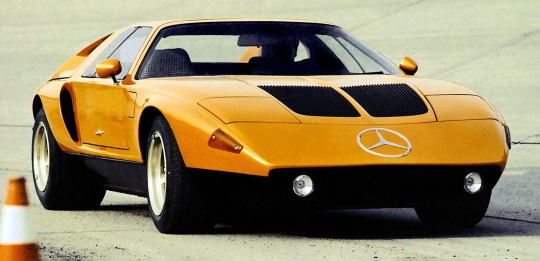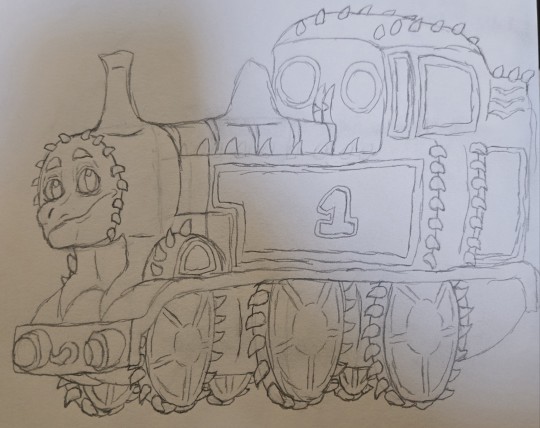#Vehicle Engineering and Design
Explore tagged Tumblr posts
Text
Cutting Edge Automotive Software solutions, Best Place to Grow through KPIT
KPIT Technologies is a global partner to the automotive and Mobility ecosystem for making software-defined vehicles a reality. It is a leading independent software development and integration partner helping mobility leapfrog towards a clean, smart, and safe future. With 13000+ automobelievers across the globe specializing in embedded software, AI, and digital solutions, KPIT accelerates its clients’ implementation of next-generation technologies for the future mobility roadmap. With engineering centers in Europe, the USA, Japan, China, Thailand, and India, KPIT works with leaders in automotive and Mobility and is present where the ecosystem is transforming.
#KPIT#About KPIT#Automotive Engineering Company#Automotive Technology Company#Mobility Technology#Automotive Software#Automotive software integration partner#Automotive software development partner#Autonomous Driving#ADAS#AUTOSAR#Vehicle Engineering and Design
0 notes
Text




Mercedes-Benz C111 II, 1970. The death was announced this week of Bruno Sacco, who served as the head of styling at Mercedes-Benz from 1975 to 1999, having joined the company in 1958. A German-Italian who had studied mechanical engineering at the Polytechnic University of Turin, Sacco worked at both Ghia and Pininfarina before moving to Germany and joining Daimler-Benz AG. The C111 was a series of experimental cars used to test new engine technologies, including rotary, diesel and turbochargers, for which Sacco was lead designer.
#Mercedes-Benz#Mercedes-Benz C111#Bruno Sacco#experimental car#prototype#design study#test vehicle#1970#mid-engine#gullwing doors
596 notes
·
View notes
Text

Volkswagen Camper ( 1959 ) 😊
#volkswagen#volkswagen campervan#campervan#cool campers#german design#german engineering#iconic vehicles#automotive#motoring#motors#car#cars#vans#mini van#van#camper van#camper#open road#iconic vehicle#flower power#hippie#nice images#great vehicles#60s icon#festivals#travel#travelling#road trip#road trips
237 notes
·
View notes
Text
Aight , since I'm beginning to have free time again with more knowledge on arting , I'll start with a warm up before I get into the bigger projects.

One of them cuddles nicely :) and the other has a mugshot <3
#ttte#thomas and friends#thomas the tank engine#ttte humanized#ttte fanart#ttte thomas#transformers#optimus prime#maccadam#transformers fanart#transformers au#my art#sketch#not the final design for oppy btw#in the same universe but not in the same times for these versions#slapped the g1 design until i have the final designs done#transformers reignited au#not gonna be as big as ttte just some memes and art to drop the lore and can be in whatever order i wished#since this series isnt a big story beat in the main main storyline#when you got two sentient vehicle franchises that had their big name show in the same year#and from rivaling companies 😔 Shakespeare moment#transformers reignited
58 notes
·
View notes
Text

Pretty much.
#car dependency#built environment#engineers#urban planning#fuck cars#*fuck car dependency#and designing everything for vehicle speed at the expense of safety#comics#funny#(i had a thing written here but tumblr fucked my other tags so i deleted them smh)
10 notes
·
View notes
Text
#indeedgoodman#high fashion#legend#fyp#luxury#design#art#race car#hypercar#motorsport#peugeot#hypercars#qatar prologue 2024#combustion engine#electric#electric vehicles#electric cars#vehicle
69 notes
·
View notes
Text

From the car files: 1963 Ford GT40 clay prototype.
#ford#ford motor comapny#fomoco#ford gt40#gt40#automotive industry#automotive design#automotive engineering#automotive engineers#vehicle engineering#vehicle design#engineering#design#60s#the 60s#60s cars
13 notes
·
View notes
Text










🇺🇲 Journey back to 2006 and witness the unveiling of The Chrysler Imperial concept car, a stunning homage to luxury and design!
🛠️ The Chrysler Imperial concept car made its grand debut at the 2006 North American International Auto Show. Inspired by the grandeur of classic American luxury cars, the Imperial was designed to exude a sense of opulence and sophistication. It aimed to revive the prestigious Chrysler Imperial nameplate, which had a rich history dating back to the 1920s.
🔧 The concept car featured a commanding presence with its long wheelbase, stately proportions, and imposing grille. Its design paid tribute to the historic Chrysler Imperials of the mid-20th century, known for their elegance and advanced engineering. The large 22-inch wheels and bold lines were reminiscent of the brand’s legacy of combining luxury with power.
🚘 The interior of the Imperial concept car was nothing short of luxurious. It showcased plush leather seats, hand-crafted wood accents, and state-of-the-art technology. The spacious cabin was designed to provide unparalleled comfort, making every ride an experience in ultimate luxury. The rear seats were particularly notable for their limousine-like comfort, featuring reclining functionality and ample legroom.
⚙️ Under the hood, the Imperial concept was powered by a 5.7-liter HEMI V8 engine, delivering robust performance to match its grand exterior. This powerful engine was paired with a five-speed automatic transmission, ensuring a smooth and responsive drive. The car's suspension was tuned for a smooth ride, aligning with the luxury expectations of the Imperial name.
📜 The Chrysler Imperial nameplate has a storied history. First introduced in 1926, the Imperial was Chrysler’s top-of-the-line vehicle, intended to compete with other luxury brands such as Cadillac and Lincoln. Throughout its production years, the Imperial was known for its innovative features, luxurious interiors, and powerful engines. The 1955 Chrysler Imperial was the first to be marketed as a separate brand, emphasizing its premium status. Notable models like the 1961 Imperial LeBaron and the 1981 Imperial featured cutting-edge designs and technology that set industry standards.
💼 Although the Chrysler Imperial concept car never made it to production, it left a lasting impression on automotive enthusiasts and industry experts. It served as a bold statement of Chrysler's vision for the future of luxury vehicles, blending timeless design with modern innovation. The concept also highlighted Chrysler's commitment to its rich heritage while looking forward to new possibilities.
📸 The concept Chrysler Imperial from 2006 remains a captivating piece of automotive history, symbolizing a moment when bold ideas and exquisite craftsmanship came together to create a truly memorable vehicle. It stands as a testament to Chrysler's enduring legacy in the luxury automotive market.
#brits and yanks on wheels#transatlantic torque#retro cars#vehicle#cars#old cars#brands#companies#automobile#american cars#chrysler corporation#chrysler imperial#american auto#automotive#concept car#old car#classic cars#classic car#engineering#luxury cars#luxury car#motor show#chrysler lebaron#automobiles#automotive history#design#car#auto#detroit#michigan
36 notes
·
View notes
Text
youtube
Ancient Mesopotamian boats return to the waters of Iraq's Basra, June 12, 2025
Traditional boats that once navigated Mesopotamian rivers are returning to Basra's waterways through the Maritime Revival Project, a local heritage initiative. Reuters
#revivalism#Mesopotamian#Iraq#Basra#Maritime Revival Project#conservation#technology#engineering#vehicles#culture#reuters#design#folk#craft#art#history#Youtube
3 notes
·
View notes
Link
The article from The Armory Life, written by Will Dabbs, MD, explores the historical significance and enduring legacy of the M2 .50-caliber machine gun, commonly known as "Ma Deuce." Originating in World War I, the gun was developed at the behest of American General John J. Pershing to counter German observation balloons and aircraft. Designed by John Moses Browning, with ammunition developed by Winchester, the M2 has been in service since 1921 and remains a staple in military arsenals worldwide. The weapon is praised for its robustness, versatility, and reliability, capable of being mounted on various platforms, including vehicles, ships, and aircraft. Though more than a century old, advancements like the M2A1 model have upgraded its features, ensuring the Browning-designed machine gun continues to be an integral part of military operations today.
#M2 Browning#.50 caliber machine gun#John M. Browning#World War II#Korean War#Vietnam War#U.S. military#vehicle-mounted weapon#anti-aircraft#anti-vehicle#heavy machine gun#recoil-operated#belt-fed#M2HB#QCB conversion kit#effective range#firing rate#Ma Deuce#weapon longevity#gun design#firearm engineering#historical impact#military use#technological advancements.
7 notes
·
View notes
Text

Happy 80th anniversary, Thomas, you magnificent blue engine, you!
#Monster Engines is back with a simpler design#Thomas the Tank Engine and Friends#80th Anniversary#Monster Vehicles AU
3 notes
·
View notes
Text
Cutting Edge Automotive Software solutions, Best Place to Grow through KPIT
KPIT Technologies is a global partner to the automotive and Mobility ecosystem for making software-defined vehicles a reality. It is a leading independent software development and integration partner helping mobility leapfrog towards a clean, smart, and safe future. With 13000+ automobelievers across the globe specializing in embedded software, AI, and digital solutions, KPIT accelerates its clients’ implementation of next-generation technologies for the future mobility roadmap. With engineering centers in Europe, the USA, Japan, China, Thailand, and India, KPIT works with leaders in automotive and Mobility and is present where the ecosystem is transforming.
#KPIT#About KPIT#Automotive Engineering Company#Automotive Technology Company#Mobility Technology#Automotive Software#Automotive software integration partner#Automotive software development partner#Autonomous Driving#ADAS#AUTOSAR#Vehicle Engineering and Design#Electric and Conventional Powertrain#Connected Vehicles#Vehicle Diagnostics#KPIT Sparkle#KPIT and Coventry University#BMW and KPIT#Innovative Company#KPIT and Udacity#what does KPIT work on#Technology KPIT work on
0 notes
Text




Skink Buggy, 1971. A 6-wheel ATV to be powered by a mid-mounted rotary engine, designed by Justin L. Dantzler, Clark Valentine and John A. Vernon. Unfortunately their design study didn't progress past this full-size mock-up. A Skink is a small prairie lizard
#Skink Buggy#ATV#6 wheeler#design study#all terrain vehicle#mid-engine#rotary engine#concept#mock-up#1970#1970s
373 notes
·
View notes
Text

VW Camper Van ( 1960s ) 😁😁
#vw#volkswagen#vw camper#camper van#cool van#german design#german engineering#open road#classic design#iconic vehicle#60s style#60s design#fun vehicles#motoring#automobiles#automobile#cars#car#van#vans#people carrier#camping#travelling#beach#automotive#motor vehicles#cool vehicles#classic vans#vw pictures#camper van pictures
58 notes
·
View notes
Photo

Speed Through Nature's Splendor 🚄🌄
Hey there, wallpaper lovers! 🌟 We’re super excited to share our latest creation with you – a stunning wallpaper titled Speed Through Nature's Splendor! This breathtaking view captures the magic of traveling on a high-speed train as it gracefully weaves through a majestic mountainous terrain.
Imagine the thrill of zooming past incredible landscapes, where every glance out the window reveals nature's finest artistry. 🌿🏞️ It’s a true marvel of engineering, and we’ve encapsulated that moment just for you!
Whether you're a fan of cars and vehicles or just love the beauty of nature, this wallpaper is sure to bring a sense of adventure and tranquility to your screen. 🖥️✨
Ready to transform your device with this gorgeous view? You can easily bring this masterpiece to your digital space by clicking on the link to Speed Through Nature's Splendor!
Let us know what you think and how it looks on your screen! Happy decorating! 🎉
Check it out here: Speed Through Nature's Splendor
Keep an eye on our blog for more amazing wallpapers!
#wallpapers#nature#mountains#high-speed train#cars#vehicles#landscape#travel#adventure#engineering#scenery#digital art#wallpaper design#nature photography#train journey#outdoor#exploration#speed#transportation#beautiful views#scenic routes
6 notes
·
View notes
Text



The unmanned aerial vehicle (UAV)
Courtesy of Wave Engine Corp
#art#design#flying private#travels#luxury lifestyle#private jet#airplane#jetsetter#UAV#aerial#vehicle#wave engine corp
14 notes
·
View notes